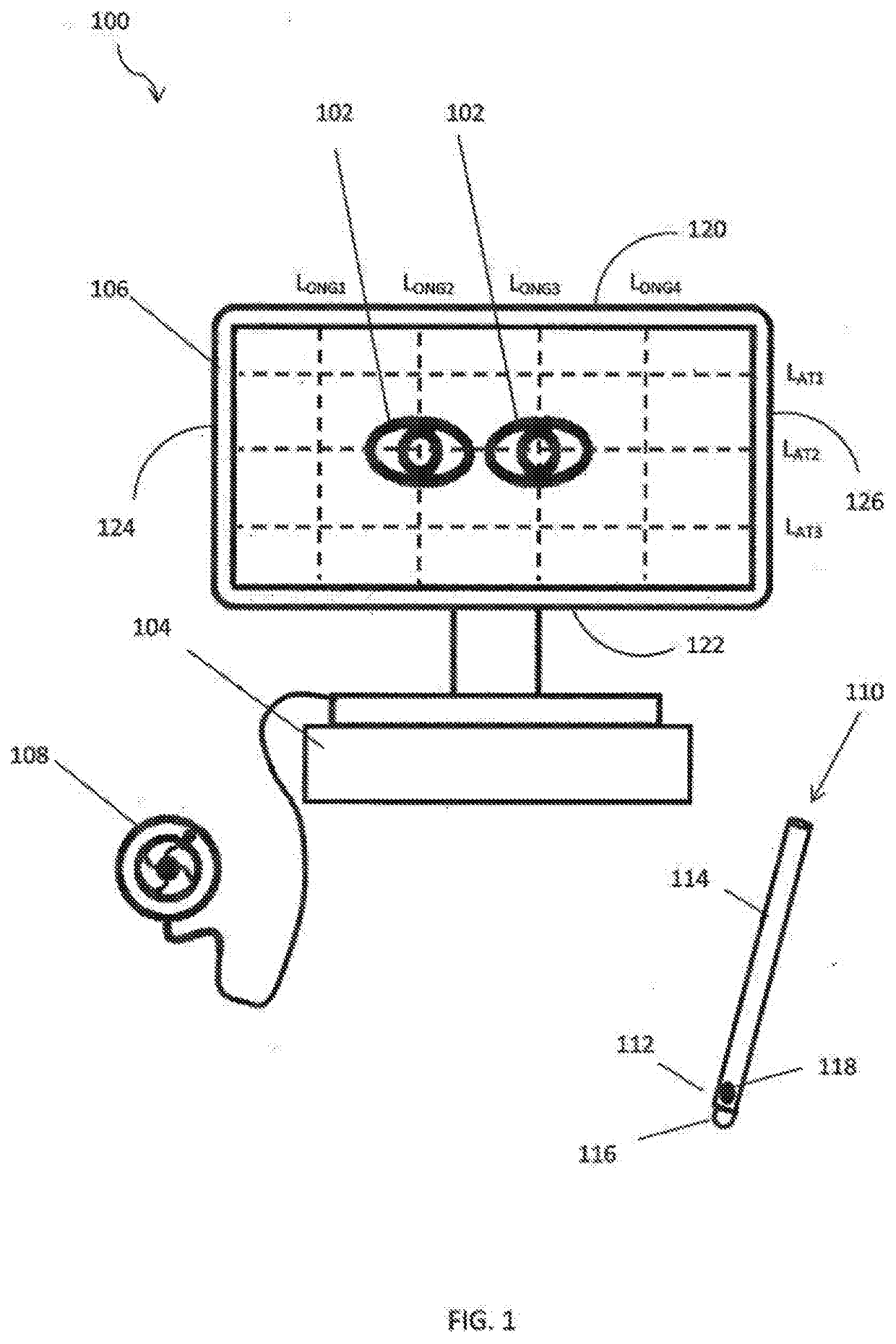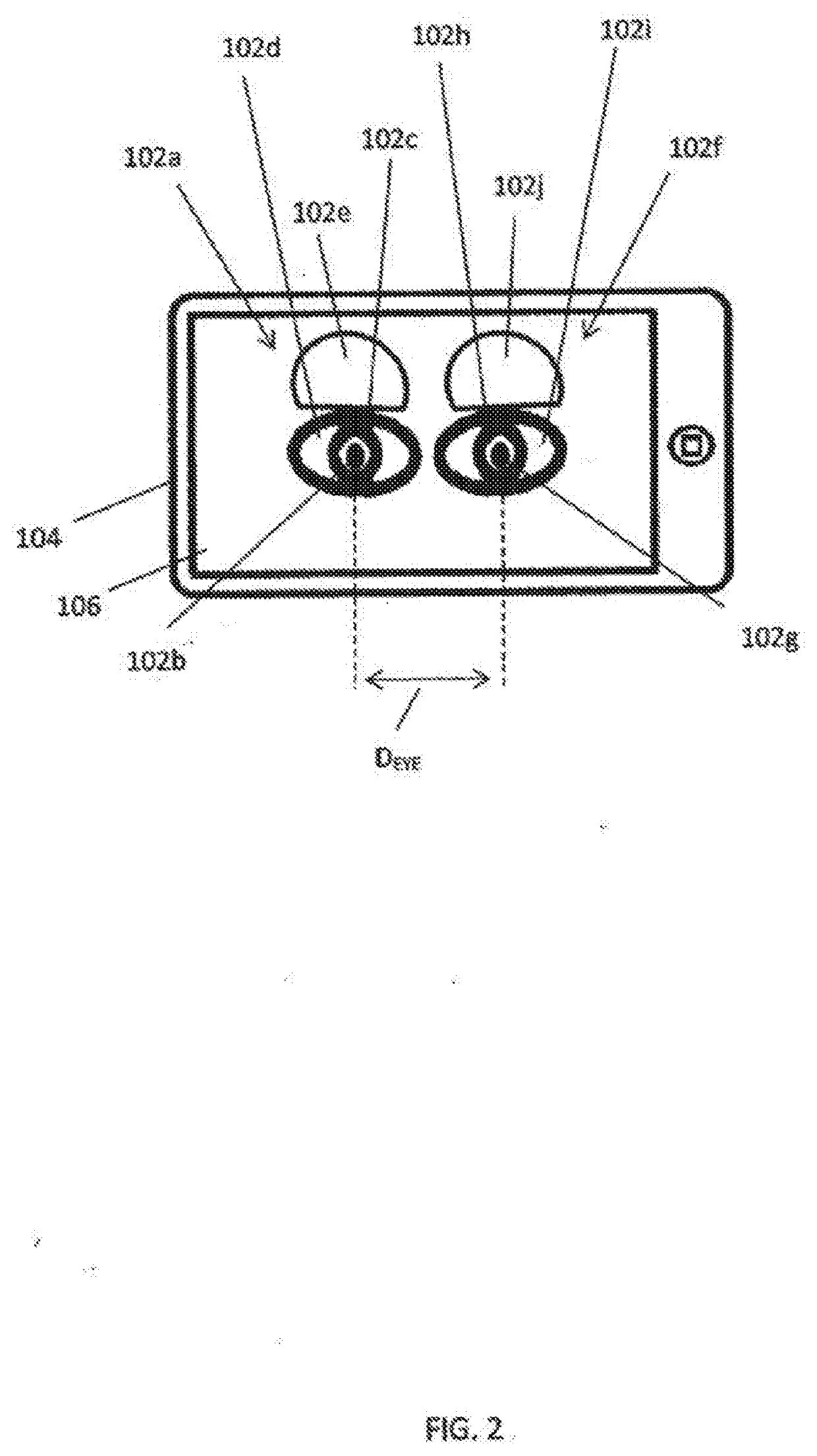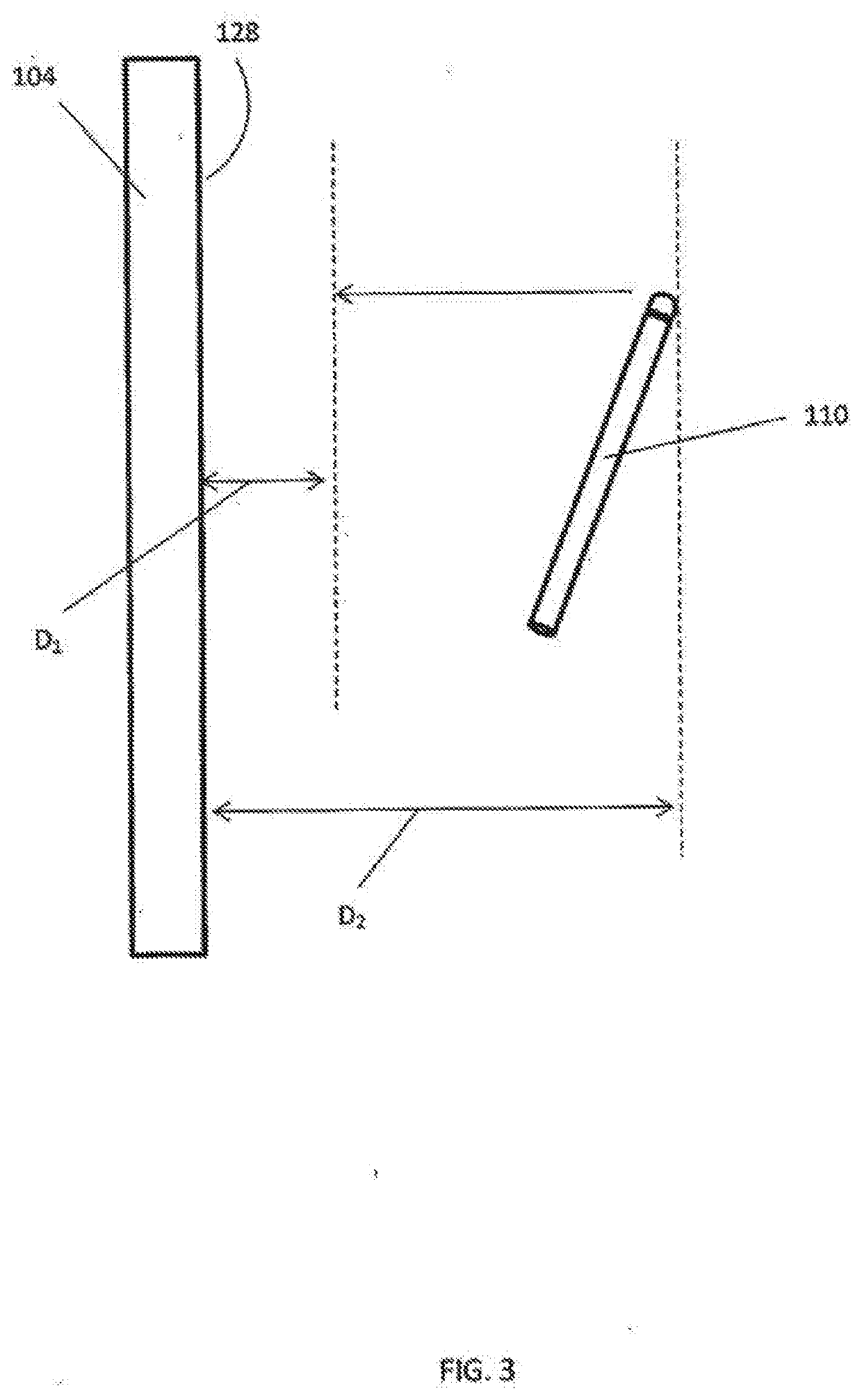Simulator for the evaluation of a concussion from signs displayed during a visual cranial nerve assessment
simulation technology, applied in the field of simulation for the evaluation of a concussion from signs displayed during a visual cranial nerve assessment, can solve the problems that conventional techniques for training medical practitioners fail to provide a system that generates realistic symptoms, and achieve the effect of improving diagnosis skills and developing skills
- Summary
- Abstract
- Description
- Claims
- Application Information
AI Technical Summary
Benefits of technology
Problems solved by technology
Method used
Image
Examples
Embodiment Construction
[0031]The following description is of exemplary embodiments that are presently contemplated for carrying out the present invention. This description is not to be taken in a limiting sense, but is made merely for the purpose of describing the general principles and features of the present invention. The scope of the present invention is not limited by this description,
[0032]Referring to FIGS. 1-2, embodiments relate to a system 100 configured to provide simulated responses via eye movements associated with a physiological condition. For example, the system 100 generates a simulated eye 102 configured to provide simulated eye movements associated with the physiological condition so as to allow medical trainees to obtain training related to assessing patients. The training can be used to improve a medical trainee's ability to accurately diagnose physiological conditions by structuring the assessments to require medical trainees to perform evaluations of the simulated eye's 102 visual f...
PUM
 Login to View More
Login to View More Abstract
Description
Claims
Application Information
 Login to View More
Login to View More - R&D
- Intellectual Property
- Life Sciences
- Materials
- Tech Scout
- Unparalleled Data Quality
- Higher Quality Content
- 60% Fewer Hallucinations
Browse by: Latest US Patents, China's latest patents, Technical Efficacy Thesaurus, Application Domain, Technology Topic, Popular Technical Reports.
© 2025 PatSnap. All rights reserved.Legal|Privacy policy|Modern Slavery Act Transparency Statement|Sitemap|About US| Contact US: help@patsnap.com



